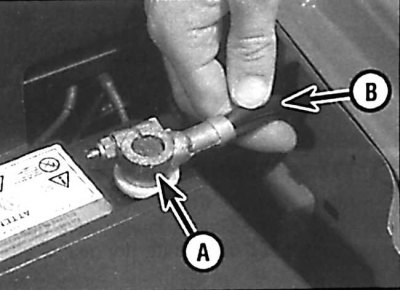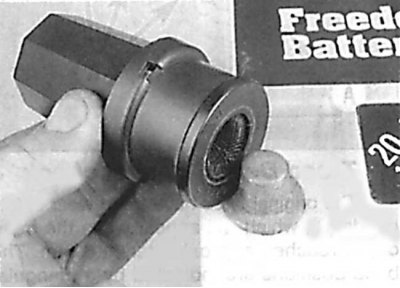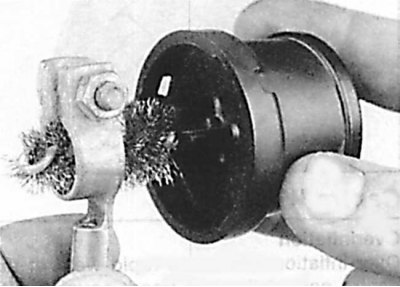Using a metal brush, clean the battery terminals and wire terminals. If necessary, rinse the terminals with a solution of baking soda and warm water. Be careful not to let the baking soda solution get into the battery banks.
Check that the battery retainer nuts are securely tightened. Do not overtighten the nuts as the battery housing may be damaged.
Lubricate the terminals with acid-free Vaseline and anti-corrosion compound before connecting the battery clamps.
Periodically (1 time per quarter) check the degree of charge of the battery, for which measure the density of the electrolyte in the banks of the battery.

Check the tightness of the battery clamps (A) and integrity of wire insulation (IN).

If the battery terminals show corrosion in the form of a white loose coating, disconnect the terminals from the battery and clean them with a small wire brush.

Using a small wire brush, clean the terminals on the wires connected to the battery.
